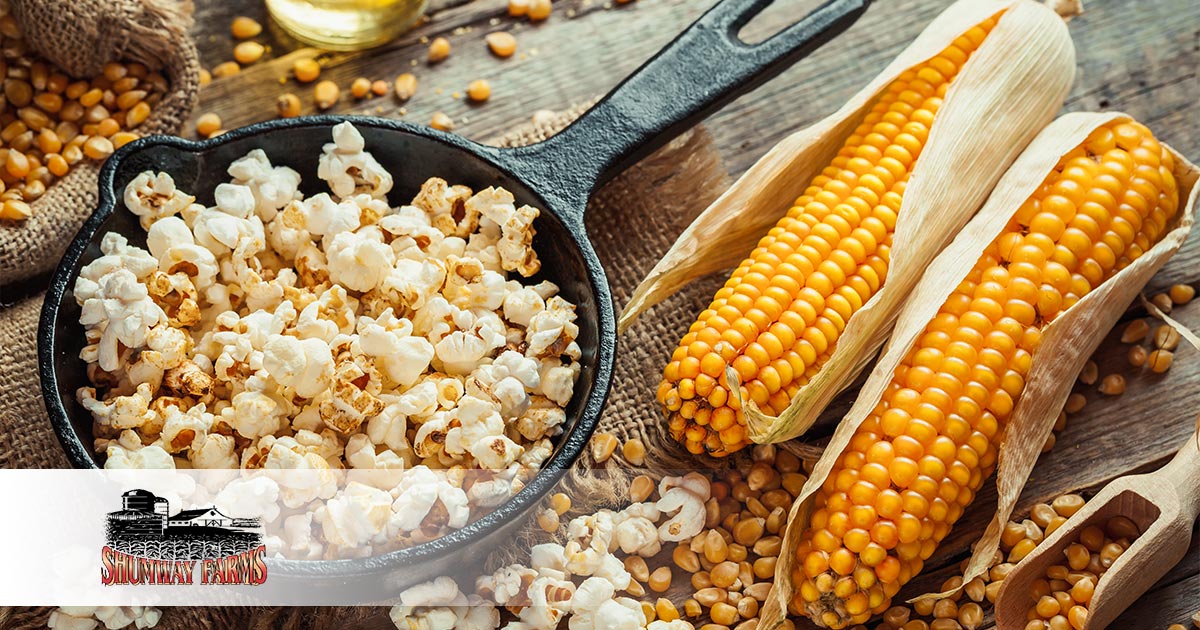

How Is Popcorn Made?
Popcorn comes from a specific maize variety (Zea mays everta), which is the only strain that can pop high-quality and delicious popcorn snacks. To fully answer the common question, where does popcorn come from? Here is a brief history.
About 10,000 years ago, corn was domesticated in Mexico. From Archaeological evidence in Peru, its popping dates back to 4700 BC. In the 19th century, popping of kernels was done on stovetops by hand. It was sold by the brand names Nonpareil or Pearls.
In the 1890s, popcorn was readily available due to the increased productivity of the many steam-powered machines created by Charles Creators. Besides the mass production, its cost was not expensive. In 1981 the first popcorn bag was produced by a microwave, and at this time, there was a sharp increase in consumption.
How Do Growing Conditions Affect Popcorn Production?
The growth conditions of kernels affect the quality of popcorn you will harvest. Therefore, growing popcorn in optimal conditions is one of those aspects that will determine the results you get in the value chain.
The question of how growing conditions affect popcorn production is common. Therefore, we explain how specific conditions affect the quality and quantity of production. Most of them cut across regardless of whether you are growing corn in large fields or small gardens.
Soil PH and Fertility
Your corn will perform best in slightly acidic to neutral pH of between 6.0 and 7.0. The soil has to be well-drained and rich in organic matter. Phosphorus and potassium should be at low levels or as recommended from soil analysis tests.
For nitrogenous fertilizers, add 0.15 pounds in each 100 feet row when the plants are a foot tall. Avoid fresh manure; it leads to incidences of bacterial diseases and lowers plant growth vigor hence low production levels.
Planting and Isolation
To get popcorn that is true to type, isolation in both time and space is necessary. With the case of space, ensure your cornfield is 300 feet away from the nearest cornfields. This is to ensure your popcorn only self-pollinates. Otherwise, your popcorn may not pop well.
If you are planting corn in the garden, and you cannot separate it with space from sweet corn, time is the option for you to consider. Plant your popcorn earlier by three weeks before you plant sweet corn. This is to ensure they tassel early and pollinate the silks before sweet corn reaches pollination maturity.
Directly sow your popcorn seeds in blocks of more than four rows to avoid blank kernels because of inadequate pollination. Sowing depth is at least 2 inches and 8 inches apart for the seeds and about 24 inches between rows.
Watering
Popcorn develops shallow roots and could be stressed in dry seasons. Therefore, proper watering is necessary. Water once a week to an inch of wetness. In case you are planting your corn in sandy soil water more than once a week during dry weather.
After maturity (mature and filled ears), you can withdraw the watering.
Weed Control
You can either use shallow cultivation, mulching, or herbicides. Control of weeds is necessary during the early stages of growth to allow your plants to grow and suppress weeds in later stages with their canopy. Weeds compete with plants for nutrition hence reducing the quality and quantity of popcorn.
Pests and Diseases
European corn borer and corn earworm are devastating insects that cause substantial losses. The earworm feeds on developing ears while the corn borer chews kernels. Control these pests with Bacillus thuringiensis products to avoid incurring losses.
Smut and leaf rust diseases also lower yields substantially. Smut appears like tumor growths on tassels and ears, while leaf rust manifests as rusty orange streaks that release orange spores. It’s a resistant disease, and you can only control it early.
Harvesting and Storage
Leave your kernels in the field while on the stalks to dry as long as possible. The ideal moisture content is either 13% or 14%. Note that over-drying also negatively affects how they pop. Mature kernels’ ears are shiny, plump, with dry husks, and are hard as well.
Store the harvested seeds without cobs in air-tight containers to prevent further drying, which affects their popping.
The Shumway Farms Difference
We have spent many decades farming the highest quality popcorn kernels in the industry and we thought it was time to educate you on how. We want our customers to feel apart of the family. If you are interested in learning more about our popcorn growth process call us at (517)767-3569 or fill out the contact form below!
